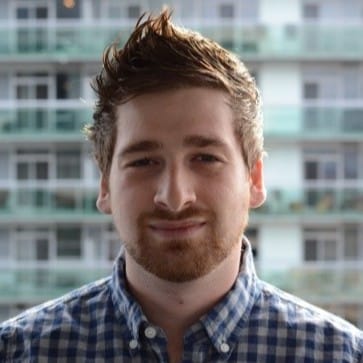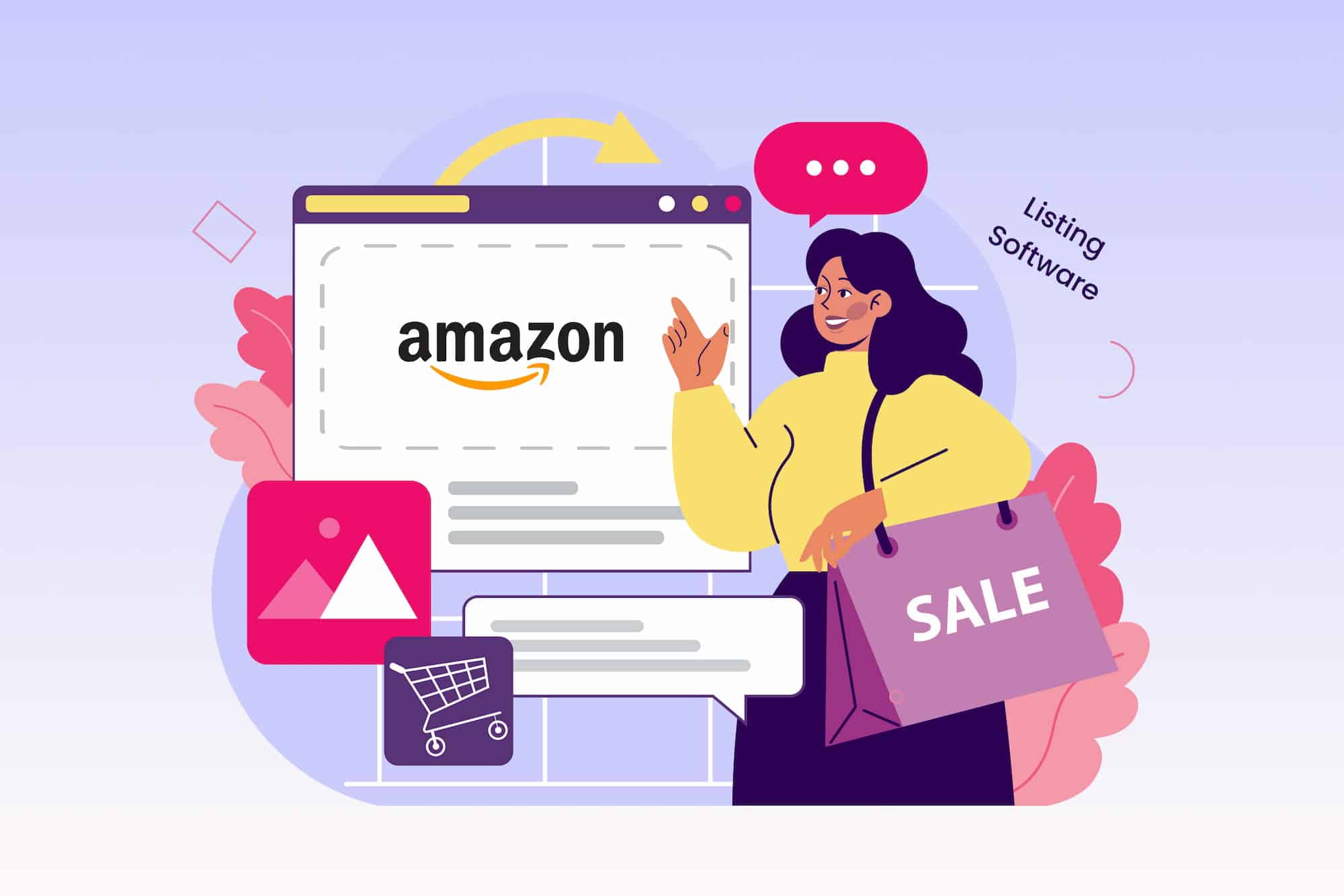For many companies, product performance on Amazon is their bread and butter. But when product listings aren’t optimized, it’s easy to lose ground to the competition—and it can be hard to win back customers when they’ve turned their interest elsewhere. That’s why it’s critical to make sure your Amazon listings are as perfected as possible from your first days as a seller.
10 Best Amazon List Software Tools
When you want to maximize your chances of success on Amazon, these ten tools can help you create efficient, effective listings:
1. Trellis
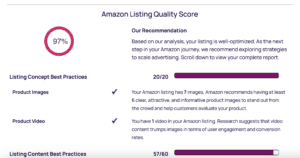
Trellis is a much-loved leader in the Amazon listing space, offering precision and insights that are unrivaled in this space. Allowing users to delve into every aspect of listing success, Our tools take a 4P approach to make listings as seamless as possible:
- Product content based on keyword exploration and listing quality,
- Placement via advertising and search analytics,
- Dynamic pricing using demand elasticity, and
- Promotional forecasting and planning.
With an advanced suite of dashboards and reporting options on top of easy-to-use features, there are few tools in the industry that compare when it comes to helping sellers succeed. Further, they have a suite of free tools you can use to gather data and optimize your listings manually.
Pros
- Comprehensive resources for every element of listing optimization using a 4P approach.
- Maximize listing performance with keyword tools, competitor analysis, content creation, and more.
- Easy to implement tools, allowing seamless integration into a current infrastructure.
Cons
- Modest investment required for access to all features.
- Tools, while user-friendly, may go beyond what a basic seller might require.
Key features
- Advertisement placing guidance,
- Product content optimization,
- Cutting-edge approach maximizing use of deals on Amazon,
- Pricing automation based on shopper demand,
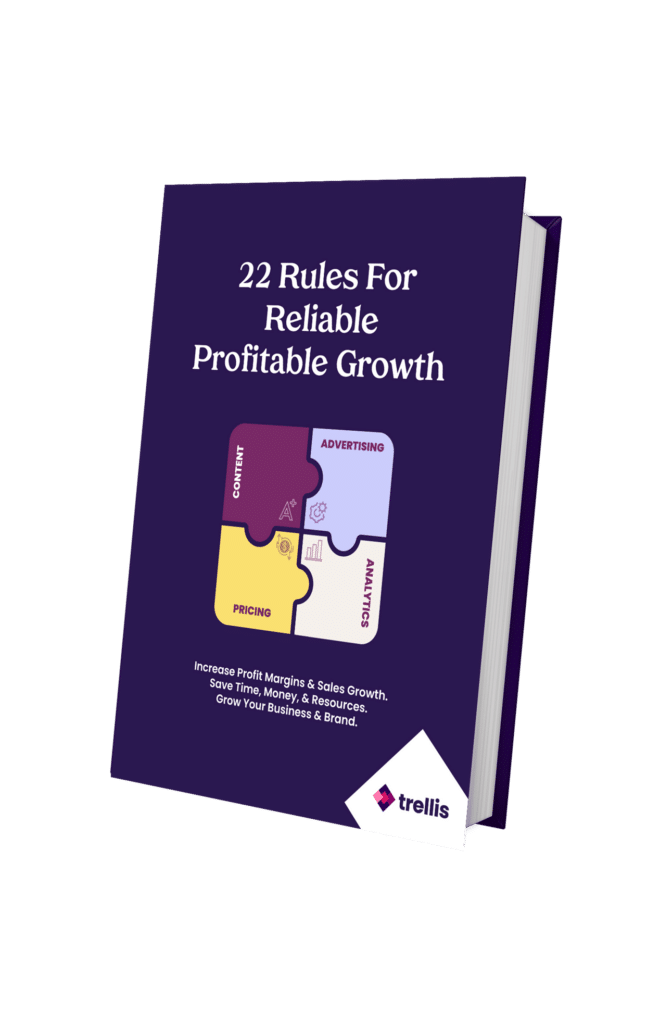
22 Rules To Increase Amazon Sales Up To 450%
Find out the proven framework we used to increase Amazon sales by 450%.
2. Jungle Scout
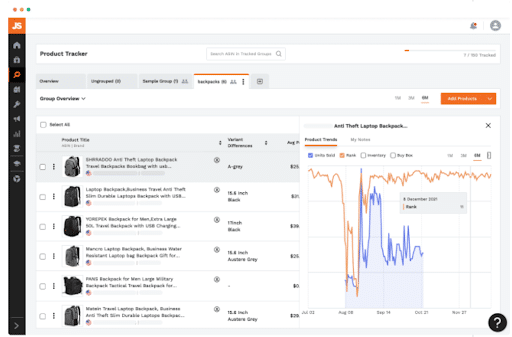
Simple and straightforward, Jungle Scout is a great product for those dipping their toes into the waters of Amazon listing optimization. Creating data-driven listings is easy with Jungle Scout’s tools, offering three different paths:
- Connection to an existing Amazon listing,
- Creation of a brand new listing from scratch, and
- Building a listing from a chosen ASIN.
This resource also has plenty of keyword-related tools, giving users ways to remove duplicates, change cases, and include or remove special characters, as well as set character limits for content creation. Listing scores change in real-time, too, allowing immediate information gathering about listing performance.
Pros
- Easy to integrate into existing infrastructure or start new listings.
- Clean, organized interface.
- Keyword-driven resources to maximize exposure.
Cons
- Less robust suite of features than competing products.
- Limited free trial.
Key features
- Use a choice of three creation options—or a combination—to build out listings,
- Leverage AI tools,
- Simple, straightforward tools that get users up and running quickly.
3. Helium 10

Helium 10 has long been a prime choice for Amazon listing optimization, in large part due to an easy-to-use suite of tools. These include Scribbles, a way to sort and track both keywords and phrases, Frankenstein, a keyword processor, and a listing analyzer to evaluate the strength of listings and those of competitors. Tools are accessible and scalable for users of all experience levels, from newbies to established agencies, making this a good option for sellers who are growth-oriented.
Helium 10 does come at a cost, however. While some features are available for free, unlimited access to Helium 10’s most beneficial tools, like Scribbles, requires a costly subscription after a trial period.
Pros
- Easy software to implement and use.
- Basic tools that anyone, regardless of experience, can learn quickly.
- Unique features built out into separate tools, allowing users to focus specifically on most needed features.
Cons
- Limited customization options.
- Not all features are available without a paid subscription.
Key features
- Unique tools like Scribbles and Frankenstein,
- Extensive analysis abilities that allow users to dig into optimization strategies across a wide range of ASINs,
- Examine prior versions of listings to compare what works with what doesn’t.
4. Semrush
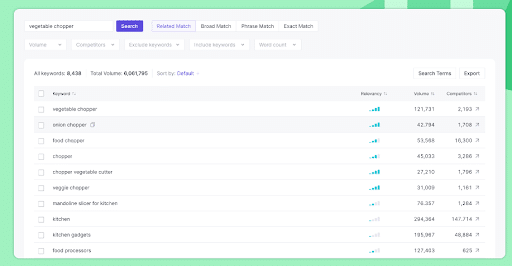
Semrush’s listing management tools are designed to boost local businesses, helping to improve listing quality, visibility, and reputation. This includes the creation of listings across numerous marketplaces and review sites, heatmaps to show the performance of keyword use over time, and access to reviews for real-time responses. With this software, brands are equipped to build a presence across the web.
When combined with the Amazon listing quality check tool, users can manage listings and ensure they’re performing as needed. With tools like listing quality assessments on a scale from one to ten and the ability to monitor style guide adherence, Semrush is ideal for small companies with growth objectives. Limited free access to both listing products is available, but wide-scale use requires a subscription.
Pros
- Easy-to-use tools with free use options.
- Listing management and listing assessment options.
- Ideal for growing businesses.
Cons
- Limited features that don’t work together seamlessly in the way more comprehensive tools do.
Key features
- Listing management across dozens of sites,
- Listing quality checks,
- Easy format to assess listing strength with clear guidance on improvement strategies.
5. Ahrefs

The Amazon keyword tool from Ahrefs is a valuable way to ensure your keyword game is on point. With a focus on maximizing what keywords can do across Amazon and beyond, sellers who want their listings to be as visible as possible can find plenty of value here.
The keyword research tools are robust and showcase unique metrics in an easy-to-use dashboard. These metrics include clicks, non-clicks to indicate keywords that aren’t attracting attention, clicks per search, and return rates to demonstrate repeat searches over the course of a month. Users can also track things like average cost per click and the keywords that drive organic traffic to competitors.
Pros
- Robust keyword research available quickly and easily.
- Access to unique keyword metrics for comprehensive analysis.
- Ability to save and export keywords with the best performance.
Cons
- Limited capabilities; users who want more than keyword research will require more than what this tool can do.
Key features
- Comprehensive metrics that make analysis easy,
- Keyword suggestions for listing optimization,
- Amazon keyword research options across numerous countries.
6. Feedonomics
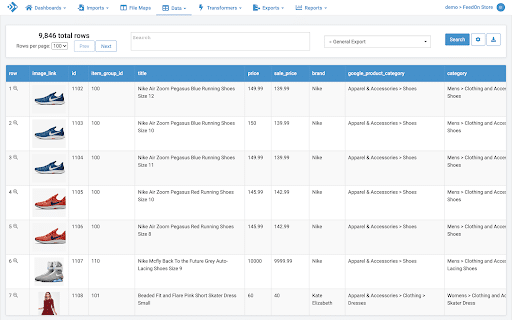
Feedonomics is all about automation and easy ways to boost listings. This Amazon listing optimization software is full of tools to improve listings across Amazon and dozens of other platforms worldwide. This includes streamlining approaches across marketplaces like Amazon and eCommerce platforms like Shopify to maximize sales opportunities and improve merchant systems.
Where Feedonomics shines, however, is with its fully managed solution, which offers assistance from both essential tools as well as human interaction with a team of marketing pros. From a 24/7 support portal to regular check-in calls from strategy specialists, companies finding their footing in this space can feel secure in onboarding and business integration with the Feedonomics interface.
Pros
- Optimization across multiple marketplaces and eCommerce solutions.
- Automated solutions to minimize time investment into listing creation and management.
- Live support to assist users in selling and listing strategies.
Cons
- While robust, not all sellers will need this level of management and human support.
Key features
- Clean, accurate content creation, including titles and descriptions,
- Key product attribute population across all listings,
- Automated order management.
7. MerchantWords
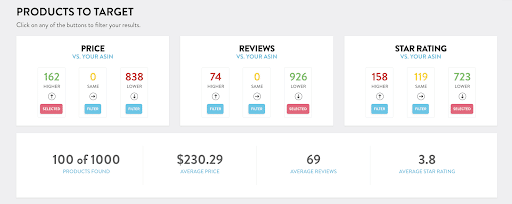
MerchantWords has been a game changer for many companies, largely due to its reliance on burgeoning technology: artificial intelligence. By using AI to optimize product listings, this software provides access to a range of tools bolstered by information mined from across Amazon. This includes resources like giving multiple draft options for potential listing content, filtering restricted terms, and writing descriptions with a focus on specific keywords and phrases highlighted by sellers.
MerchantWords isn’t limited to Amazon, either; this platform is supported across Walmart, eBay, Etsy, and Shopify, among others. While Amazon is a focus for many sellers, those who sell widely will see significant value here.
Pros
- Straightforward AI support for keyword-rich content.
- Robust listing tools to optimize Amazon performance.
- Availability across ten languages, including French, Spanish, and German.
Cons
- Limited features overall; sellers who want to go beyond content writing or AI tools are likely to be disappointed.
Key features
- Multiple draft options created for users to choose from,
- Keyword research across multiple languages,
- Keyword-focused approach to AI content creation.
8. Viral Launch

Viral Launch offers an integrated suite of tools ideal for those looking to build out their Amazon listings. There are a few different pieces to the puzzle provided by this full suite of seller services, including Keyword Manager, Listing Analyzer, and Listing Builder.
The Listing Analyzer tool, in particular, can do a lot of heavy lifting, with competitor analysis options like price comparisons, content evaluation abilities, assigned optimization scores, and automated keyword tools. This wide range of opportunities provides a little something for everyone, no matter their unique needs. While not as expansive as comparative tools, the price point is lower than similar products on the market.
Pros
- Multiple tools to choose from that can maximize Amazon performance.
- Focus on keywords, listing analysis, and listing creation to focus on precise needs.
- Collect data and insights to optimize performance.
Cons
- Less comprehensive than other Amazon listing tools.
- Still requires a membership, in addition to having several tools that require additional fees.
Key features
- Track, monitor, and gain insights from keyword analysis,
- Determine health and quality of seller listings,
- Use keywords and content creation to curate custom listings.
9. AMZ Tracker

AMZ Tracker’s Amazon listing software describes itself as providing both offensive and defensive resources for Amazon sellers. This means using Amazon’s A9 algorithm to grow visibility and accelerate sales velocity, as well as a way to monitor negative reviews and alerts for listing hijacking—both proactively working toward success while stopping problems in their tracks.
This dual-faceted approach is relatively unique in the listing optimization space, but can work wonders for companies who want to approach listing success from multiple directions.
Pros
- Access to both offensive and defensive strategies.
- Listing promotions and keyword research capabilities.
- Negative review management to improve reputation.
Cons
- Steep prices with a minimal free trial period.
- Range of tools that might go beyond what a standard user needs.
Key features
- Keyword and product research tools,
- On-page and URL analysis,
- Sales tracking,
- Negative review management.
10. SellerApp
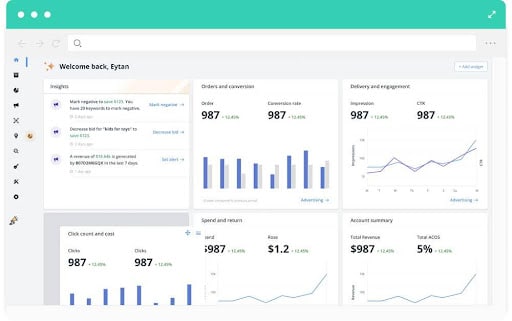
Curious about where your listings fall short, and how to improve them? SellerApp is here to help. This tool is all about using ranking analysis to determine the quality of listings, and what sellers can do to boost the strength of their product pages.
Unlike other tools that focus on listing creation, SellerApp is all about breaking down keyword usage and content strength to rate potential performance. This includes desirability and discoverability scores to rank the probability that shoppers will buy your products—and, if scores are low, what you can do to improve ranking indices.
Pros
- SEO-focused approach to listings, including organic rank analysis and deep dives into ranking backends.
- Utilize A9 algorithm standards to create compelling listings.
- Access to the unique “Listing Quality Index” that assigns scores to listings.
Cons
- Limited scope; with an SEO-based strategy, SellerApp is great at what it specializes in, but lacks the varied nature of alternative tools.
Key features
- SEO-focused analysis to guide keyword use,
- “Listing Quality Index” scores to gauge listing strength,
- Utilize both desirability and discoverability scores to rate potential sales performance.
Why do I need an Amazon listing optimization tool?
If you’re creating your Amazon listings from scratch, you might have a few tricks up your sleeve, but struggle to keep up with your competitors without a clear understanding of why. With what is relatively a small investment, you can do everything you’ve been handling by hand—and so much more—with the help of automated tools. These are some of the benefits an Amazon or Amazon FBA listing software can provide:
Increase rankings
Listing tools are designed to increase rankings. This can range from keyword research to AI-driven content creation to competitor analysis. Rather than guessing what keywords and phrases are best or trying to glean insight from the competition by reading descriptions and reviews yourself, let tools drive this process for you so your brand can verify it’s heading in the right direction.
Save time
Analytics software has many upsides, but saving time is perhaps the biggest advantage. Handling listing curation and management can eat up a lot of energy, particularly when spending weeks or months trying to figure things out for yourself. An automated tool can reduce this burden, bypassing the guesswork to give you ways to analyze keywords, create content for your listings, and gauge how competitors are performing with stats. With more free time, you can watch your business grow while improving how your team is able to allocate resources.
Boost sales & profits
When your listings perform better, so do your sales. A listing optimization tool can increase visibility and help your business perform better against the competition, which means more opportunities to drive profits. An investment in a top Amazon listing optimization software means your brand’s beginnings can translate into exponential growth over time.
Amazon listing optimization tips
Using Amazon listing management tools is a great start, but these resources alone can’t ensure a company succeeds. As a seller, understanding the root elements of effective optimization is critical to ensuring the greatest benefits. To give you a leg up, our Amazon listing optimization guide explores the ins and outs and everything in between to help you outpace the competition.
Content
Content is generally the most important area of focus for sellers, and while it’s not the only avenue to maximize visibility and performance, it’s certainly a critical way to keep eyes on your listings. Amazon’s ranking algorithm takes many facets of content within listings into account, including:
- Product Price: Product prices set dynamically based on availability and customer demand are a great way to stay competitive, particularly if other brands are keeping prices stable. Optimization tools can do this work for you, keeping pricing dynamic to meet market demands.
- Product Title: Titles sound straightforward, but in reality, they’re the first step in introducing your products to sellers and a major ranking factor by Amazon’s A9 Algorithm. Using keywords and phrases, numerical values where appropriate, and minimizing irrelevant adjective and adverb use can all strengthen title performance.
- Keyword Rankings: Using keywords no one is searching for or that are overused in your space can mean your listings get lost in the shuffle. To avoid this, do research on the most valuable broad match keywords in your space, long-tail terms, and how competitors approach rankings.
- Key Feature Bullets: Long, rambling bullets can stifle customer interest. Keep bullet points to 40 words or less, use words like “you” to put shoppers into the mindset of your products, and create urgency with statements encouraging action, like “buy now!”
Images & videos
Images and videos are commonly overlooked by sellers who only consider written content, but this can play into Amazon rankings as well as appeal to customers.
When using images, simple can be best. Showcase items on a white background and make features clear and obvious. Show items at different angles, too, like the front and back of a shirt, to help customers understand offerings. Keep in mind Amazon’s image resolution requirements to ensure your content will be accepted.
Video strategies should be similar; keep them clear, short, and to the point. Include all features from the text on your page and, when possible, show how products can be used to clarify instructions. If necessary, include answers to frequently asked questions and demonstrate best uses and benefits of your product.
Reviews
Reviews are one of the first things Amazon buyers look for when considering a product. No reviews or bad reviews often mean no sales. However, waiting for reviews to show up on their own can be a tedious process. Instead, consider:
- Providing products at low prices to inspire purchases.
- Timing your launch to coincide with shoppers’ needs during key periods.
- Offer coupons and discounts to new and returning buyers.
- Provide high-quality products with easy return information, heightening customer trust.
Regardless of your goals as a seller, the right Amazon listing optimization software can be an effective way to grow your presence on the world’s predominant online marketplace. And, with resources from Trellis, you can tackle every key aspect of Amazon listing management.
Contact us today to learn more about our software, and how we can help your business evolve.


